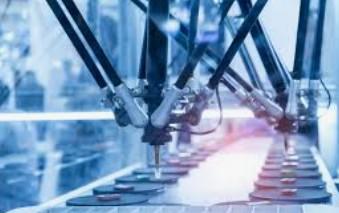
Biopharma Manufacturing Expands in the U.S. Under Tariff Pressure: Texas & California Emerge as Key Hubs

As global trade uncertainty intensifies, particularly in the pharmaceutical sector, major biopharma companies are doubling down on U.S.-based manufacturing. Southern states like Texas and California—due to their strategic location, existing life sciences ecosystems, and strong logistics networks—are emerging as prime destinations for new biopharma manufacturing facilities.
Tariff Threats Prompt a Strategic Shift in Biopharma
Amid rising pressure from the Trump administration to re-shore pharmaceutical production, Swiss-based Roche has announced a staggering $50 billion investment over five years to expand its U.S. manufacturing footprint. The plan includes new drug manufacturing facilities, diagnostic production sites, and the creation of over 12,000 jobs, half of which will be in construction.
This investment wave follows threats of steep tariffs on pharmaceutical imports. President Trump has pledged to enforce high taxes on companies that fail to localize production, forcing industry leaders to reconsider their global supply chains.
Texas & California: Biopharma Hotspots on the Rise
While Roche has yet to finalize all locations, southern border states are strong contenders. Roche already operates 28 U.S. sites and employs over 25,000 people, with plans to significantly expand this presence. Meanwhile, Texas is already listed in AstraZeneca's $3.5 billion U.S. expansion and Novartis is investing $23 billion into 10 new facilities, including radioligand therapy production in Texas and Florida.
Johnson & Johnson, Eli Lilly, and AstraZeneca have also committed billions to new U.S. projects. Johnson & Johnson alone plans $55 billion in expansion across its MedTech and Innovative Medicine divisions, while Eli Lilly is adding $27 billion to its U.S. investments on top of $23 billion already committed since 2020.
This ongoing boom in biopharma facility construction solidifies Texas and California as top-tier locations for future pharmaceutical production, particularly for advanced biologics, drug packaging, and device assembly.
Contract Manufacturing & Supply Chain Realignment
Beyond the pharmaceutical giants, contract manufacturers are also scaling operations. Regeneron Pharmaceuticals, for example, has partnered with Fujifilm Diosynth Biotechnologies to establish a $3 billion end-to-end biomanufacturing facility. Executives from Fujifilm cited favorable incentives and a skilled workforce—both abundant in southern border states—as key decision factors.
This relocation trend is largely influenced by the administration’s new pharmaceutical tariff regime and proposed drug pricing reforms. Trump’s rhetoric around an “America-first pharmaceutical industry” has created strong incentives for domestic reinvestment.
Caution from Pfizer, But Momentum Builds
While many firms are ramping up, others remain hesitant. Pfizer CEO Albert Bourla noted that policy ambiguity is causing delays in capital investment decisions. Without clearer trade regulations, companies are holding back. Still, if tax incentives for U.S.-produced pharmaceuticals are confirmed, analysts expect a second investment wave.
According to Jefferies analyst Tycho Peterson, over $160 billion in new biopharma manufacturing investments are already in the pipeline. Roche alone is likely to invest an additional $20 billion in infrastructure tied to biologics and production technology.
The U.S.-Mexico Border: A New Biopharma Corridor?
The U.S.-Mexico border region stands at a pivotal moment. With robust logistics capabilities, cross-border trade access, and skilled talent pools, areas like Texas are poised to become vital hubs in global biopharmaceutical manufacturing. This could transform the region into one of the most dynamic centers for pharmaceutical innovation and supply chain efficiency.
As more companies relocate biopharma production to the U.S., especially under the lens of trade policy shifts and tariff threats, the southern border region is gaining strategic importance in the future of life sciences manufacturing.



